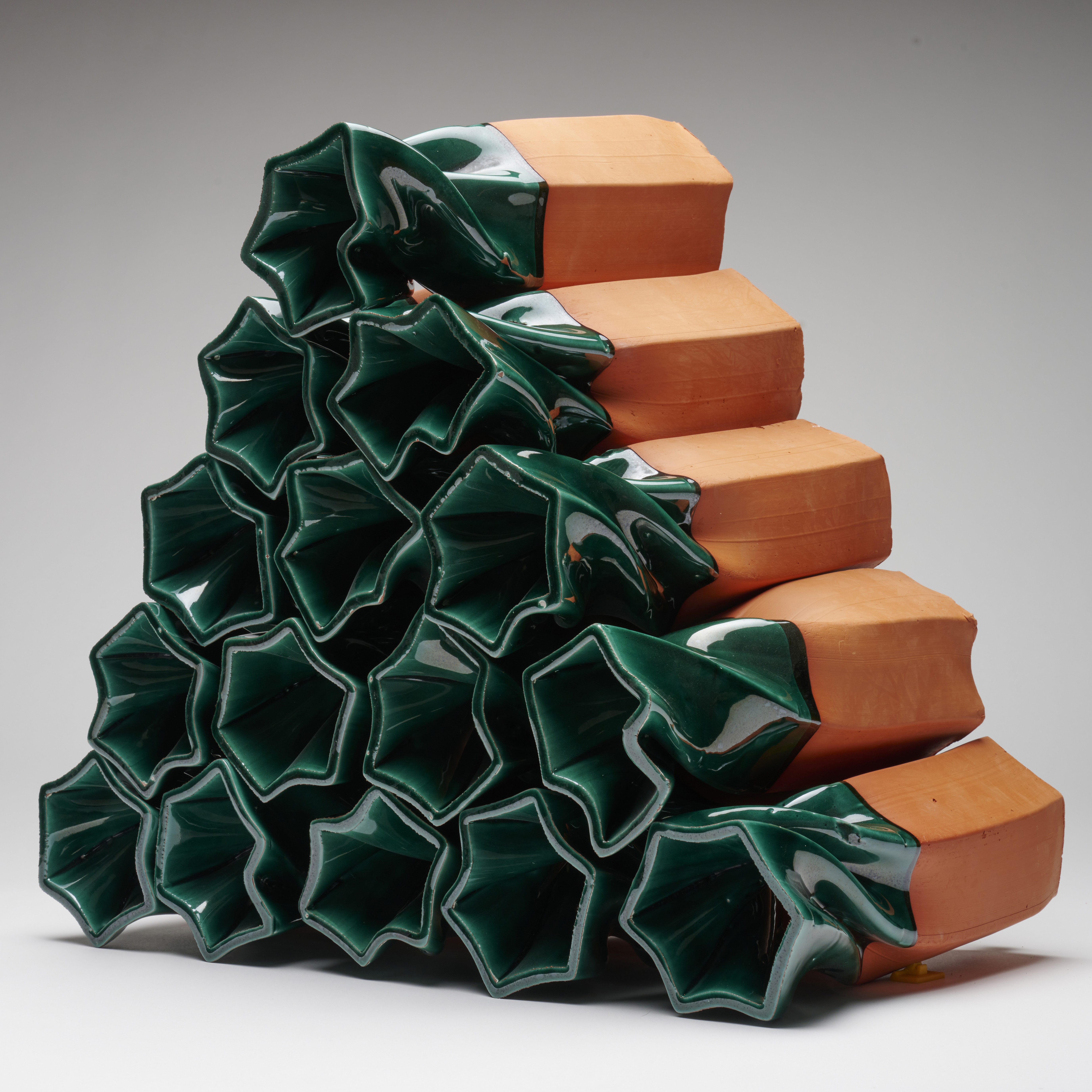A Multidisciplinary Approach to the Development of Thermal Clay Modules
DOI:
https://doi.org/10.7577/formakademisk.5424Emneord (Nøkkelord):
Ceramics, crafting, virtual design-simulation, multidisciplinary collaboration, clay extrusionSammendrag
This study focuses on the idea that industrial production methods, combined with a craft-based approach, enable the production of distinctive expressive thermal functionalities. We developed extruded modules based on a hands-on explorative craft approach in parallel with virtual simulations to explore how heat and cold are transported dynamically through building modules. This paper discusses the developed method and process used in a multidisciplinary approach that combines the quality of craft-based practice with architecture, engineering and programming, focusing on how craft practitioners experiment with material, technique and aesthetics in such a multidisciplinary approach. In this study, immediate concrete design proposals demonstrated a helpful way of establishing common ground for multidisciplinary collaboration. Concrete design proposals are pivotal in addressing the suggested design’s advantages and disadvantages and clarifying the differences and potentials between the specialisations in question. Based on the initial design proposals, it was clear how the craftsperson’s previous experiences within crafts practice quickly led to the identification of realisable solutions based on experimental setups and aesthetic solutions and, at the same time, was able to foresee possible complications.
Referanser
Alvarez, A. (n.d.). Anton Alvarez. http://antonalvarez.com/
Binder, T., & Redström, J. (2006). Exemplary design research. DRS Biennial Conference Series. https://dl.designresearchsociety.org/drs-conference-papers/drs2006/researchpapers/51
Brinck, I., & Reddy, V. (2020). Dialogue in the making: Emotional engagement with materials. Phenomenology and the Cognitive Sciences, 19(1), 23–45. https://doi.org/10.1007/s11097-019-09629-2
Bundgaard, R. (2021). DIVERSITY by Strøjer Tegl – Klink, R. http://cargocollective.com/klink/Product-DIVERSITY-by-Strojer-Tegl
Dormer, P. (1994). The art of the maker. Thames and Hudson.
Hawkes, D. (2019). The environmental imagination: Technics and poetics of the architectural environment (2nd ed.). Taylor & Francis. https://doi.org/10.4324/9781315210575
IPCC. (2021). Climate change 2021: The physical science basis, United Nations. Cambridge University Press. https://doi:10.1017/9781009157896.
Johns, R. L., Kilian, A., & Foley, N. (2014). Design approaches through augmented materiality and embodied computation. In W. McGee & M. Ponce De Leon (Eds.), Robotic fabrication in architecture, art and design 2014 (pp. 319–332). Springer International Publishing. https://doi.org/10.1007/978-3-319-04663-1_22
Joshi, D. K. (2018). Passive cooling techniques in ancient Indian buildings: A study. International Journal of Architectural Heritage, 1(2), 11–20. https://doi.org/10.37628/.v1i2.421
Leach, B. (1976). A potters book. Faber & Faber.
Moe, K. (2013). Convergence: An architectural agenda for energy. Routledge & CRC Press. https://www.routledge.com/Convergence-An-Architectural-Agenda-for-Energy/Moe/p/book/9780415824910
Sennett, R. (2008). The craftsman. Yale University Press.

Nedlastinger
Publisert
Hvordan referere
Utgave
Seksjon
Lisens
Opphavsrett 2023 Flemming Tvede Hansen , Isak Worre Foged, Vasiliki Fragkia

Dette verket er lisensiert under Creative Commons Attribution-NoDerivatives 4.0 International License.
- Forfatteren(e) beholder sin opphavs- og kopieringsrett til eget manuskript, men gir tidsskriftet varig rett til 1) å fremføre manuskriptet for offentligheten i den opprinnelig publiserte digitale form, og 2) å registreres og siteres som første publisering av manuskriptet.
- Forfatteren må selv forvalte sine økonomiske kopieringsrettigheter overfor eventuell tredjepart.
- Tidsskriftet gir ingen økonomisk eller annen kompensasjon for innsendte bidrag, medmindre det er gjort særskilt avtale om dette med forfatteren(e).
- Tidsskriftet plikter å arkivere manuskriptet (inklusive metadata) i den opprinnelig publiserte digitale form, i minst ett dertil egnet åpent tilgjengelig langtidsarkiv for digitalt materiell, som for eksempel i de norske universitetenes institusjonsarkiv innen rammen av NORA-samarbeidet.
Verket vil bli publisert OpenAccess med en Creative Commons 4.0-lisens som tillater alle å lese, dele og tilpasse innholdet, også kommersielt, under lisensvilkårene:
Dette verket må tilskrives/ krediteres på riktig måte, en lenke må gis til CC-BY 4.0-lisensen, og endringer som er gjort må angis på en rimelig måte, men ikke på noen måte som antyder at lisensgiveren støtter deg eller din bruk.



